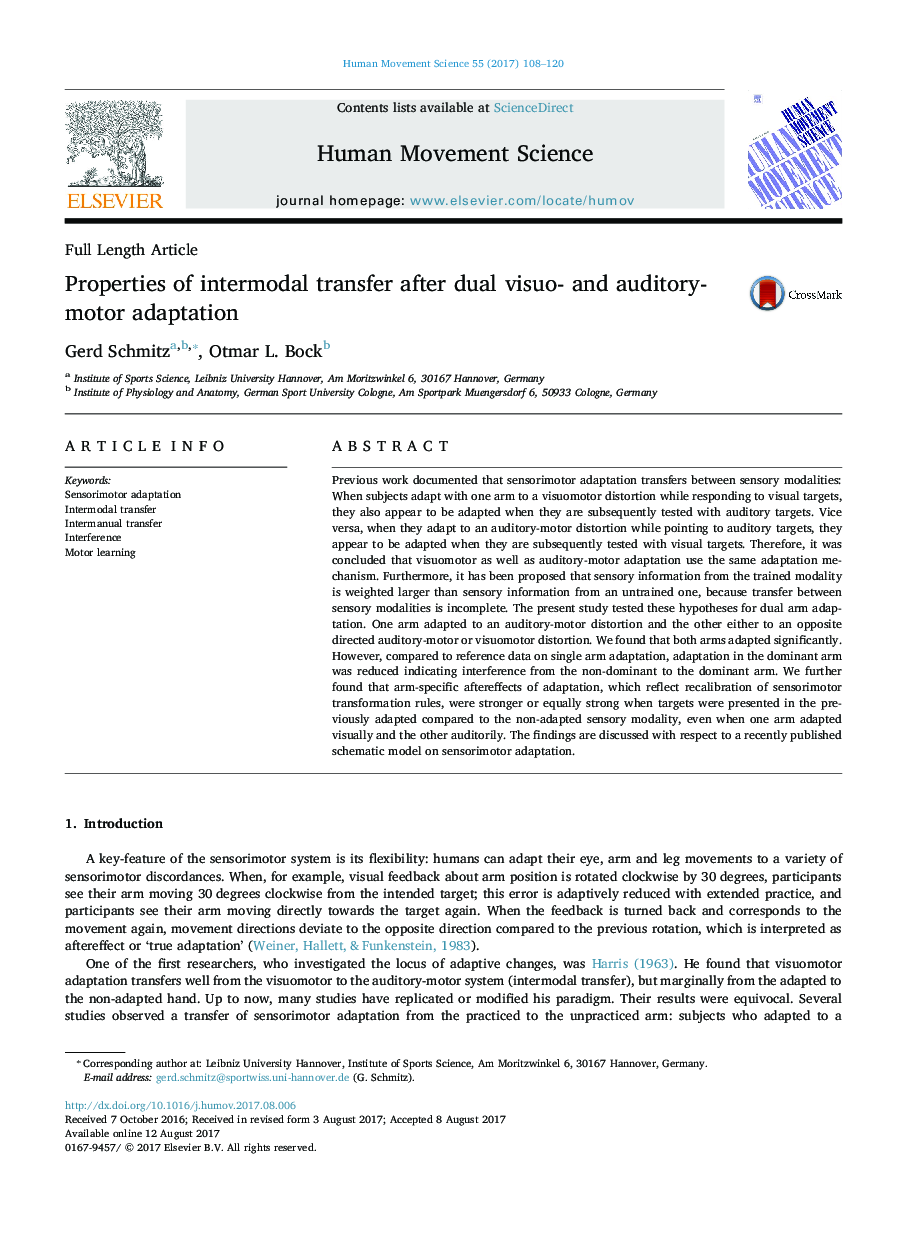| Article ID | Journal | Published Year | Pages | File Type |
|---|---|---|---|---|
| 5041935 | Human Movement Science | 2017 | 13 Pages |
â¢We investigate concurrent sensorimotor adaptation of both arms in different modalities.â¢Both arms adapt to opposite directed auditory-motor rotations of feedback.â¢The right arm adapts to a visuomotor and the left arm to an auditory-motor rotation.â¢Interference from the non-dominant to the dominant arm occurs.â¢For each arm, adaptation aftereffects are larger in the trained than the untrained modality.
Previous work documented that sensorimotor adaptation transfers between sensory modalities: When subjects adapt with one arm to a visuomotor distortion while responding to visual targets, they also appear to be adapted when they are subsequently tested with auditory targets. Vice versa, when they adapt to an auditory-motor distortion while pointing to auditory targets, they appear to be adapted when they are subsequently tested with visual targets. Therefore, it was concluded that visuomotor as well as auditory-motor adaptation use the same adaptation mechanism. Furthermore, it has been proposed that sensory information from the trained modality is weighted larger than sensory information from an untrained one, because transfer between sensory modalities is incomplete. The present study tested these hypotheses for dual arm adaptation. One arm adapted to an auditory-motor distortion and the other either to an opposite directed auditory-motor or visuomotor distortion. We found that both arms adapted significantly. However, compared to reference data on single arm adaptation, adaptation in the dominant arm was reduced indicating interference from the non-dominant to the dominant arm. We further found that arm-specific aftereffects of adaptation, which reflect recalibration of sensorimotor transformation rules, were stronger or equally strong when targets were presented in the previously adapted compared to the non-adapted sensory modality, even when one arm adapted visually and the other auditorily. The findings are discussed with respect to a recently published schematic model on sensorimotor adaptation.
